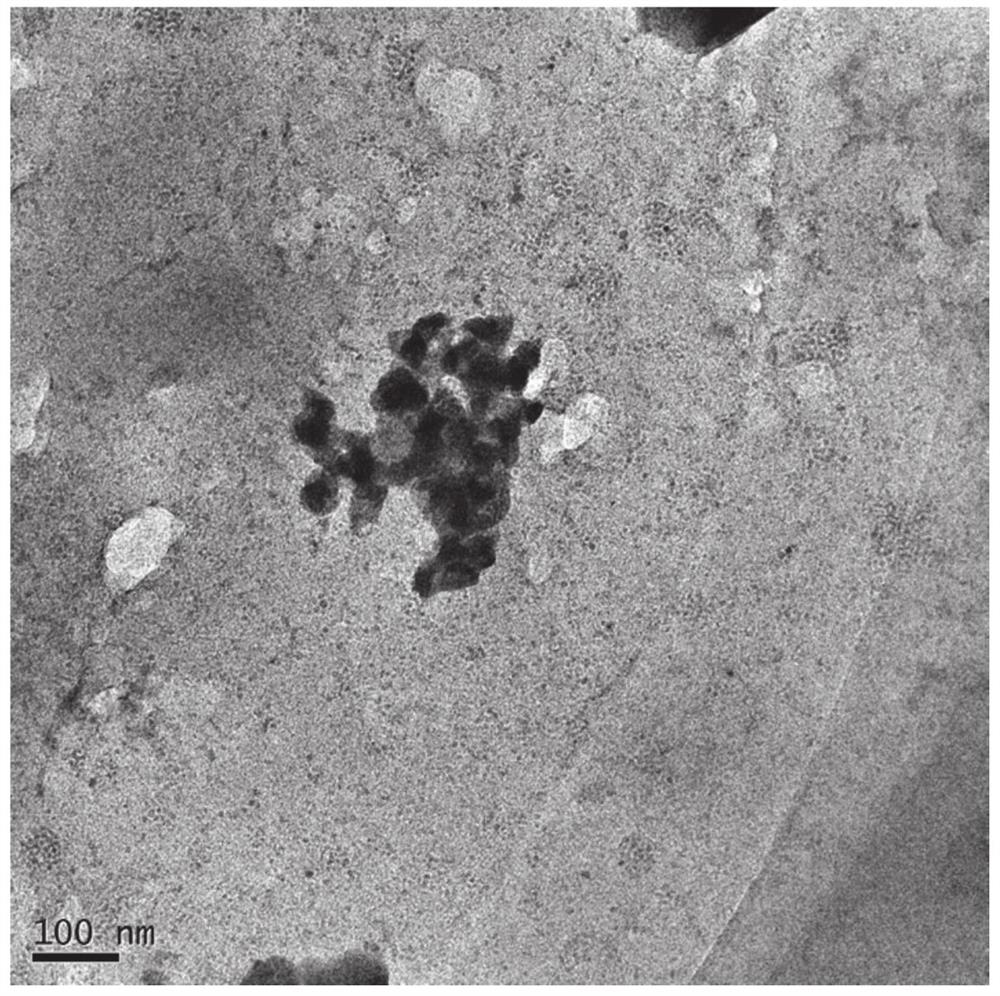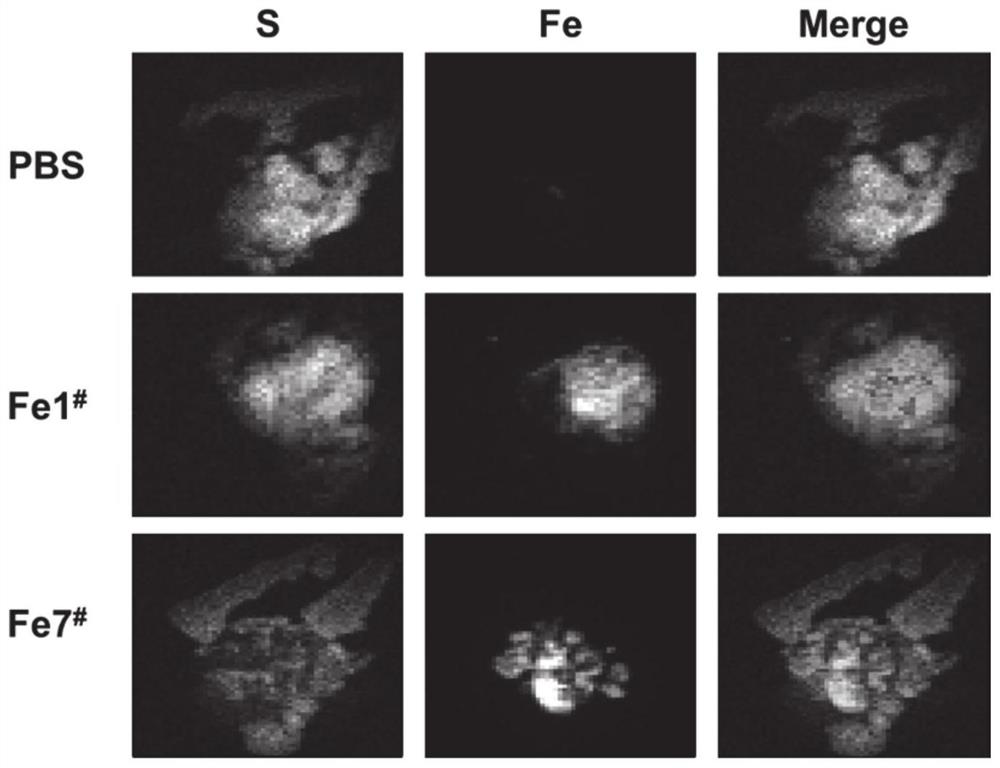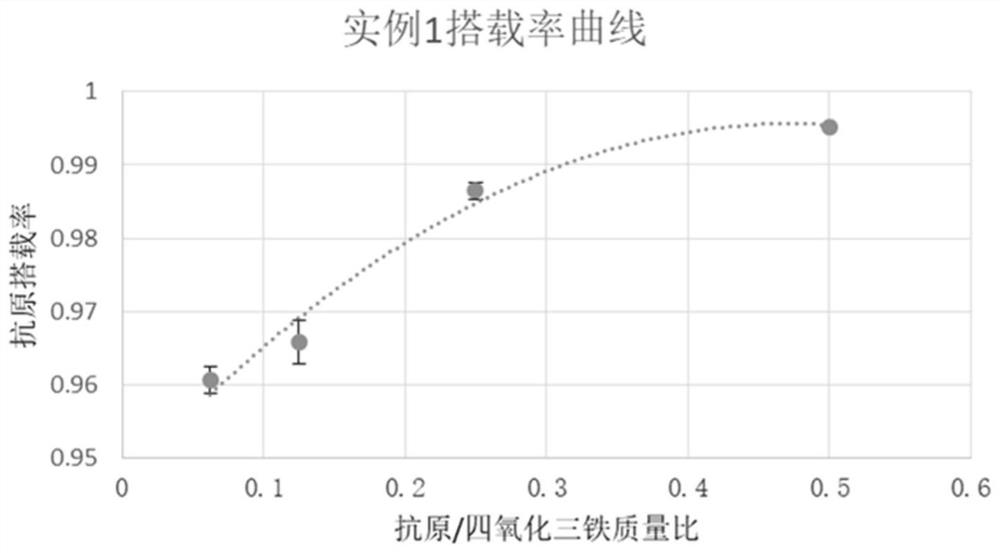Ultra-small nano immunopotentiator-antigen composite nanoparticle and preparation method and application thereof
A technology of composite nanoparticles and immune enhancer, which is applied in the directions of cancer antigen components, vertebrate antigen components, anti-tumor drugs, etc., can solve the problems of difficult to treat metastatic malignant tumors, unable to achieve ideal tumor immune effect, etc., and achieves the preparation method. Simple, immunogenic, and biocompatible
- Summary
- Abstract
- Description
- Claims
- Application Information
AI Technical Summary
Problems solved by technology
Method used
Image
Examples
Embodiment 1
[0070] First prepare ferric oxide nanoparticles, 3.4g FeCl 3 ·6H 2 O was dissolved in 12ml of deionized water, and then 10.5g of sodium oleate was added to obtain a reaction mixture. A mixture of 45ml of n-hexane and 25mL of ethanol was added to the reaction mixture and heated to 70°C for 4 hours. After the reaction, the top organic layer (ie ferric oleate) was obtained through a separatory funnel, and washed three times with deionized water. The n-hexane was removed by low-speed rotary evaporation to obtain iron oleate nanoparticles.
[0071] Fe3O4 nanoparticles were obtained by ferric oleate, oleyl alcohol and octadecenoic acid. Dissolve 2g of iron oleate complex in 20ml of oleyl alcohol and 0.3ml of octadecenoic acid mixture. After degassing with nitrogen, reflux at 300° C. for 60 minutes under nitrogen protection. The solution turned from brown to black. After cooling to room temperature, acetone was added to stabilize the nanoparticles, which were isolated by centri...
Embodiment 2
[0076] Firstly, ferric oxide nanoparticles were prepared, and FeCl 3 ·6H 2 O was dissolved in deionized water, followed by the addition of sodium oleate. The mixture of n-hexane and ethanol was added to the reaction mixture and added to 70° C. for 4 hours. After the reaction, the top organic layer (ie ferric oleate) was obtained through a separatory funnel, and washed three times with deionized water. The n-hexane was removed by low-speed rotary evaporation to obtain iron oleate nanoparticles.
[0077] Fe3O4 nanoparticles were obtained by ferric oleate, oleyl alcohol and octadecenoic acid. Dissolve 2g of iron oleate complex in oleyl alcohol and octadecenoic acid mixture. After degassing with nitrogen, reflux at 300° C. for 60 minutes under nitrogen protection. The solution turned from brown to black. After cooling to room temperature, acetone was added to stabilize the nanoparticles, which were isolated by centrifugation and dissolved in cyclohexane.
[0078] Mix polyst...
Embodiment 3
[0082] First prepare iron ferric oxide nanoparticles, purify 20mL polyacrylic acid aqueous solution (M w=1800, the concentration is 5 mg / mL) for 60 minutes to remove oxygen, and then the solution was heated to reflux at 100°C. Subsequently, 0.4 mL of ferric chloride (500 mM) and 500 mM of ferric sulfate were quickly added to the solution, and 6 mL of ammonia water (28%) was added, and magnetic stirring was continued at 100° C. After 1 hour, the solution was cooled to room temperature. Obtain ultra-small iron ferric oxide nanoparticles, and dialyze it in ultrapure water environment for 5 days (cutoff molecular weight is 6-8kDa). Then the solution after dialysis is subjected to ultrafiltration and centrifugation (the cut-off molecular weight is 10kDa), and the ultra-small iron ferric oxide nanoparticles obtained after concentration are denoted as sample Fe10 # .
[0083] Subsequently, take 20 μg of the prepared ferric oxide nanoparticle powder and dissolve it in deionized wat...
PUM
| Property | Measurement | Unit |
|---|---|---|
| particle diameter | aaaaa | aaaaa |
| particle diameter | aaaaa | aaaaa |
Abstract
Description
Claims
Application Information
 Login to View More
Login to View More - R&D
- Intellectual Property
- Life Sciences
- Materials
- Tech Scout
- Unparalleled Data Quality
- Higher Quality Content
- 60% Fewer Hallucinations
Browse by: Latest US Patents, China's latest patents, Technical Efficacy Thesaurus, Application Domain, Technology Topic, Popular Technical Reports.
© 2025 PatSnap. All rights reserved.Legal|Privacy policy|Modern Slavery Act Transparency Statement|Sitemap|About US| Contact US: help@patsnap.com



